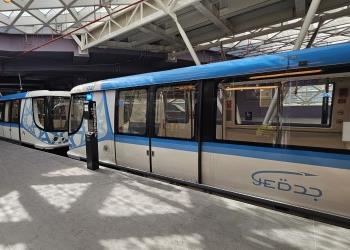
Tumbling raw materials prices have given the state energy giant an opportunity to negotiate cheaper deals on its refinery projects to ensure they go ahead on schedule.
The fate of Saudi Arabia’s two export refineries took an abrupt turn in November 2008, just months after state energy giant Saudi Aramco and international oil majors had given the go-ahead for the ventures at Jubail and Yanbu to proceed.
With oil prices slumping to less than $50 a barrel from a record high of $147 a barrel in July 2008, Aramco launched a review aimed at lowering costs on the estimated $10-12bn projects.
Its hesitation in pressing ahead with the twin facilities was certainly justified. The capital cost of building large downstream units, such as the export refineries, had roughly doubled over the previous five years.
However, tumbling commodity and raw materials costs have now handed national oil companies such as Saudi Aramco a golden opportunity to negotiate cheaper deals.
Aramco’s more relaxed attitude to hitting the original project deadlines has also been influenced by the dramatic drop in global demand for oil, particularly in the US.
In line with the Opec’s production cuts over the past six months, Saudi Arabia has now trimmed output by about 20 per cent, or 2 million barrels a day (b/d), to average about 8 million b/d in late February. Consequently, there is less immediate pressure to fast-track its downstream facilities; given the oil market is forecast to remain depressed for some time due to the ongoing economic slump.
Extended deadlines
As a result, the deadline for construction bids on the 400,000 b/d Jubail refinery, a joint venture of Aramco and France’s Total, has been extended from February to April to attract lower prices. To encourage more competitive bids from contracting firms, Aramco has softened some of the commercial terms, including cash flow and performance bond requirements.
Aramco executive director Khaled al-Buraik tells MEED that the firm expects a strong bid response from the contracting community.
“We are working closely with contractors because everyone is having to adapt to the new [cost] environment,” he says. “We want this to be a world-class experience for all of the stakeholders who will join us in these projects.”
Privately, contractors have been told that the Saudi oil giant is hopeful of reducing costs by up to 30 per cent, although it is likely to settle for a 15-20 per cent cut.
“There [are] Aramco’s figures and then we have our own figures,” one Al-Khobar-based contractor tells MEED. “We will try to meet in the middle, although it will not be easy.”
On Saudi Arabia’s Red Sea coast, the 400,000-b/d Yanbu refinery, a joint venture of Aramco and the US’ ConocoPhillips, is approaching the changing cost climate even more cautiously. Engineering, procurement and construction (EPC) bids that were due in December 2008 have now been delayed until the second quarter of 2009, with ConocoPhillips citing uncertainties in the financial and contracting markets.
However, the joint venture says it will maintain joint engineering, start-up planning and other preparatory activities to ensure the project continues, despite the EPC delay.
Boosting capacity
The refineries are part of a broader plan to boost Aramco’s domestic and international refining capacity to about 3.6 million b/d by 2013, from about 2.4 million b/d currently, as part of a $70bn investment programme. The strategy behind the export refinery plan is to help create a market for Aramco’s heavy oil deposits, which will comprise a greater proportion of the kingdom’s output over the next decade as light crude reserves begin to dwindle.
Historically, Saudi Arabia has been able to produce large amounts of light oil, the most commercially attractive form of crude, due to its massive oil reserves. But with many of its fields ageing, it will increasingly produce larger amounts of heavier grades to stem natural declines and maintain export targets.
Advanced plans on other strategic refinery ventures and upgrades in the kingdom suggest the next five years are likely to remain busy for contractors, suppliers and vendors, despite the global downturn.
Prequalification for the new $8bn east coast refinery at Ras Tanura started in February, with strong initial interest shown by contractors. The refinery is designed to handle domestic supplies, and sources are confident that the project will go ahead, along with an associated integrated petrochemical complex being developed by Aramco in a joint venture with the US’
Dow Chemical at the same site.
Feedstock will be supplied from the existing Ras Tanura refinery complex as well as the Juaymah gas fractionation plant.
Aramco may also press ahead with a second phase expansion of the PetroRabigh plant in conjunction with Japan’s Sumitomo Corporation, while a slew of existing refineries in the kingdom, including Saudi Aramco Shell Refinery (Sasref) and Saudi Aramco Mobil Refinery (Samref) are either being modified or tapped for modernisation in line with new environmental regulations.
The only sour note in the kingdom’s downstream strategy is further down the Red Sea coast, where a refinery being promoted by the Oil Ministry at the remote Jizan site is struggling to attract interest from local or international partners.
Revised timelines
Bidders lining up to build the Jizan oil refinery were last year issued with a fresh construction deadline of 2015, a two-year delay to the original schedule. A further blow came earlier this year, when another revised timeline for oil majors to submit their development proposals was itself put back to 2 September from the original 7 March deadline.
One Saudi contractor, who has already prequalified, said there is now a widespread feeling that the project may eventually be shelved.
“Jizan feels dead in the water,” the Dammam-based contractor tells MEED. “There has been some interest from developers in the past, but given where oil prices are at the moment, this is seen as a difficult project to justify. The fact Aramco is not involved also makes some people nervous.”
While the massive ramp-up in supply may look out of sync with current market sentiment, Al-Buraik says Aramco takes a long-term view of the market rather than worrying about current uncertainties.
“You cannot think about what is happening today or tomorrow,” says Al-Buraik. “It is about planning for the future and the needs of our customers.”
Energy analysts agree that Aramco is unlikely to change its strategy because of short-term market dips, although several sound a note of caution about the ability of international oil companies to maintain their commitment.
The global credit crunch has dramatically changed the investment climate, making project financing both more expensive and more difficult to obtain.
“You have companies like Total, Conoco and Dow all considering shelling out billions of dollars at a time when their investment plans face intense shareholder scrutiny,” says one Middle East energy analyst based in Dubai.
“I am not sure you can bank on all of these firms proceeding and, if they do, they are likely to want to hold off committing these big sums of money until the [oil] market is back on track.”
Samuel Ciszuk, Middle East and North Africa (Mena) analyst at US-based IHS Global Insight, says the next wave of projects, including the twin export refineries, will proceed.
“The feeling one gets from speaking to contractors and sub-contractors in the region is there is no doubt that these [export] refineries will go ahead,” says Ciszuk. “What is really causing the shake-up in the market is this newfound determination to see through lower costs. That is certainly new to the kingdom.”
Beyond 2013, there is little consensus on how Saudi Arabia’s downstream sector will proceed. “If this current wave of spending does go ahead, I think you will see Saudi [Arabia] pausing and regrouping,” says the Dubai-based analyst. “No one can predict what the market will be like then, but it seems unlikely that there will be an urgent need for new refineries to be built.”
But certain trends are likely to continue beyond the current refining boom. The integration of existing refineries with naptha and liquefied petroleum gas (LPG)-fed petrochemical complexes, which Aramco has deployed at PetroRabigh and Ras Tanura, is set to hasten because of cost savings and feedstock flexibility.
While integration in such ventures will remain controlled by state-run Aramco, the private sector will continue to be actively encouraged to participate in associated conversion parks to help create the end products.
For international energy companies not already involved in refinery ventures in the kingdom, the possibility of working in Saudi Arabia’s upstream gas sector may become more viable over the medium term. With the country now only just managing to meet domestic demand for gas, Ciszuk says he expects a stronger emphasis on new exploration efforts.
“We are not looking at a comfortable decade in terms of gas,” he says. “Around 2012 or 2013, there could be a period of alleviated tightness, so there may be opportunities going forward.”
Future demand
Aside from the 1.8 billion cubic feet a day Karan gas development, Aramco has mostly relied on using associated gas from its large oil fields to meet demand. With these large fields ageing, fresh gas exploration opportunities could appear.
Few expect prime gas acreage to be handed to oil majors, especially given the ongoing disappointing results from the four Rub al-Khali [Empty Quarter] ventures, but some prospective work may be considered.
“There is a realisation that there needs to be work on a strategy for standalone gas exploration in Saudi Arabia,” says the Dubai-based analyst. “Whether it will invite partners or develop the projects alone remains to be seen.”
Despite the uncertainty that continues to have an impact on the international energy markets, Saudi Arabia remains better placed than any of its Gulf neighbours to soothe investor concerns and implement its core strategic refinery projects.
However, beyond the next phase of growth, activity in the downstream sector is likely to involve less mega-refinery schemes, with the state-run firm expected to focus on adapting and rehabilitating its existing assets.
You might also like...

Petrofac awards Adnoc carbon capture sub-contract
18 April 2024

Neom tenders Oxagon school construction
18 April 2024

Clarifications advance for Neom renewables
18 April 2024

Alstom wins Jeddah airport deal
18 April 2024
A MEED Subscription...
Subscribe or upgrade your current MEED.com package to support your strategic planning with the MENA region’s best source of business information. Proceed to our online shop below to find out more about the features in each package.








